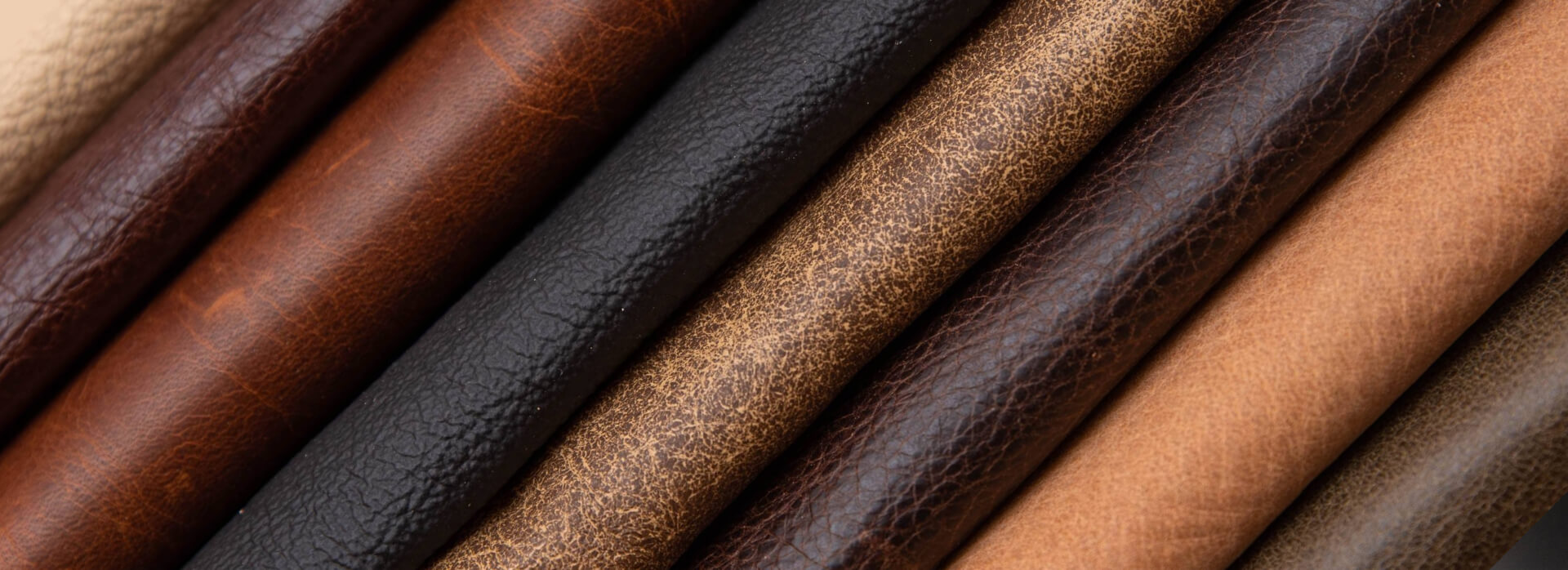Leather & Fabric Care
General Care
One of the simplest and most straightforward ways to care for your furniture is to ensure that you don’t use it in ways that can potentially cause structural damage.
For instance, don’t rock back on chairs, don’t sit on the leg rests of recliners, and avoid sitting on the arms of sofas and lounges.
Avoid excessive exposure to sunlight
Leather and fabric sofas, lounge suites, armchairs and other pieces of furniture will be affected if they are continually exposed to direct sunlight. It can cause colours to fade, and leather to become excessively dry.
Timber furniture, such as chair arms and legs, and other timber fixtures and fittings (including doors) can warp over time if they are exposed to excessive sunlight for extended periods of time.
Therefore, using curtains or changing the position of furniture whenever possible (especially during summer) can help to overcome these problems.
Caring for leather furniture
A key feature of a genuine leather sofa is that it will have a range of natural markings and imperfections. Other characteristics include stretch marks, scars and wrinkles, all of which are entirely to be expected and contribute to a leather sofa’s unique appearance.
Genuine leather is generally hard wearing and will continue to look and feel good for many, many years if it is cared for correctly.
There are, therefore, some useful tips that will help to ensure your leather sofa, lounge suite or armchair looks at its best for as long as possible:
- Avoid prolonged exposure to sunlight, as this can cause the leather to fade, or to dry out and crack;
- Do not place leather furniture within 50 cm of a heat source, including gas or electric heaters;
- Only use leather care products that are specifically designed for use with leather upholstery;
- Avoid shoe or saddlery care products, as well as any form of solvent or abrasive;
- Don’t allow dust to build up on the surface, as this can lead to dirt becoming embedded and cracks forming in the leather. Regular wiping down with a soft damp cloth can help to avoid this.
- Use recommended leather care products every three months or so to clean and condition the entire surface; and
- Any spills, food or grease stains should be cleaned off immediately using a paper towel or a soft, absorbent cloth, dabbing with minimal pressure rather than rubbing too firmly. Recommended leather care products can then be used to help restore the surface.
Caring for fabric furniture
There are some straightforward cleaning and maintenance steps that you can take to ensure that your fabric sofa, lounge suite or armchair enjoys a long, comfortable life.
- Take some care with sharp objects, or anything that might catch or snag the fabric. If loose threads do appear, cut or tie them rather than pulling at them;
- Try and keep pets off your fabric furniture — as far as is humanly possible!;
- If your sofa or armchair has reversible seat and/or back cushions, remember to turn them regularly. Likewise, plump them often, smoothing out the surface as far as possible to prevent creases forming;
- Use a de-pilling tool if, over time, fibres begin to twist and form pills;
- Use a specialist fabric furniture cleaning kit for spot stain removal, and avoid general household cleaning fluids or solvents;
- Regularly go over the surface of your fabric furniture with a vacuum cleaner (on a low setting);
- Always follow any cleaning and care instructions on the label.
Care for timber furniture
Furniture made from natural timber, and with a veneer finish, will have its own distinct markings, patination and colouring (not unlike genuine leather). Any unevenness is entirely to be expected and what makes timber furniture distinctive.
In order to protect the veneer and the timber beneath on a dining table, coffee table or other piece of furniture, you should always use coasters when putting cups or glasses down on the surface, and a form of protective mat or stand when placing hot plates or saucepans on a table.
A damp, non abrasive cloth will usually be sufficient for cleaning, so avoid using general household cleaning liquids.
Care for marble and travertine surfaces
In order to protect natural materials such as marble and travertine, you should avoid placing hot objects like cups, plates and saucepans directly on the surface. Instead, use coasters, a protective mat or a stand in order to prevent the natural markings and patination from being affected.
If there is a liquid spill, this should be wiped clean immediately with a non-abrasive cloth. For regular cleaning to remove dust and dirt, a warm damp cloth can be used (avoid using general household cleaning liquids as far as possible).
Care for chrome and metal finish furniture
Any furniture with a chrome or metal surface or finish should be dusted regularly, in order to avoid potential rusting which can eventuate if dirt and other contaminants are able to build up. Sharp objects can scratch the surface, so care should be taken if using these.
If a chrome surface needs cleaning or revitalising, only use a specialist chrome polish rather than regular household cleaning materials.
Care for furniture glass
If you have a glass topped table, do not place hot objects like cups, teapots or saucepans directly on the glass surface. Instead use coasters, placemats, mats or stands. You should also avoid the use of any sharp objects, as this can cause scratches.
To clean glass furniture, use a specialist glass cleaner rather than regular household cleaning materials, as the latter will result in streaks and can ultimately have a corrosive effect. However, avoid using glass cleaner on frames or any other part of the furniture (especially timber).
If you have to remove the glass top from a table for any reason, lift it from the middle rather than the ends in order to avoid putting unnecessary stress on the surface.
